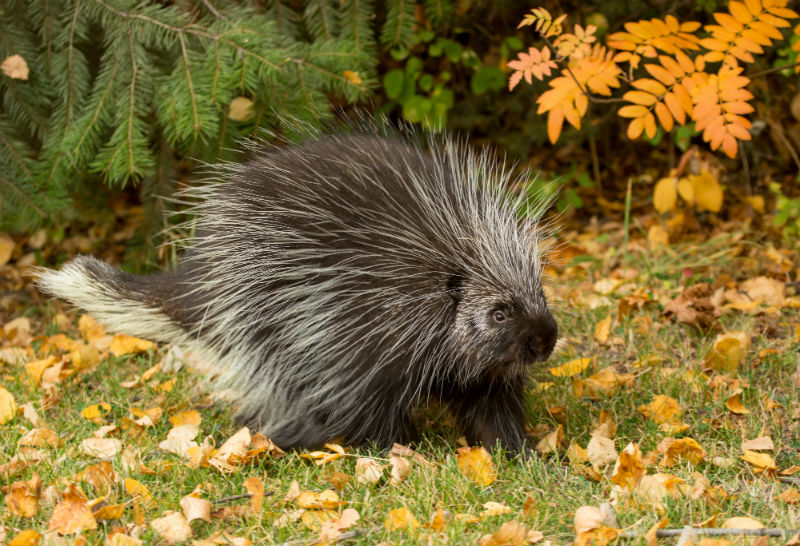Porcupines are small slow-moving herbivorous critters, that are largely nocturnal. They are most likely to be investigating and eating at dusk and throughout the night. They have terrible vision, but a great sense of smell and protect themselves from being injured by predators (i.e. your dog), with the use of long thin sharp quills that have small unidirectional barbs.
When your dog attacks a porcupine, he will be stabbed numerous times with these quills, which then embed themselves in the skin of your dog. The quills often embed in the investigatory parts of your dog’s body, such as the nose and front paws. They also attack elements of their body, such as the head, face, tongue, and oral cavity. A dog has to touch a porcupine to get stabbed by quills. Contrary to popular belief, porcupines do not “shoot” quills into their victim.
What should you do if your dog gets quilled? The short answer is: take him to your veterinarian. Most veterinarians have substantial experience removing porcupine quills from dogs. It is done with deep sedation or anesthesia to make the procedure less painful, less stressful more effective and efficient. Quills are painful and can be difficult to remove with an awake patient. The quills are more likely to break off if your dog is moving at all during quill removal. Broken quills are even more difficult to remove and therefore, are more likely to migrate inward, where they can affect other body systems.
I have had clients try to be helpful by cutting off the ends of the quills before coming in with their dog. Please don’t do this, it serves no benefit. It makes the process more difficult. Cut quills are not as strong as intact ones and are, therefore, more likely to slide through our surgical instruments, compared to intact ones.
In summary, dogs are investigatory and can be predatorial. They have the potential to come into contact with porcupines and get quilled. If your dog does get quilled, take him to your veterinarian in a timely fashion to have the quills removed in a comfortable safe, efficient and effective manner.
Written by Dr. Rob Doucette, DVM




